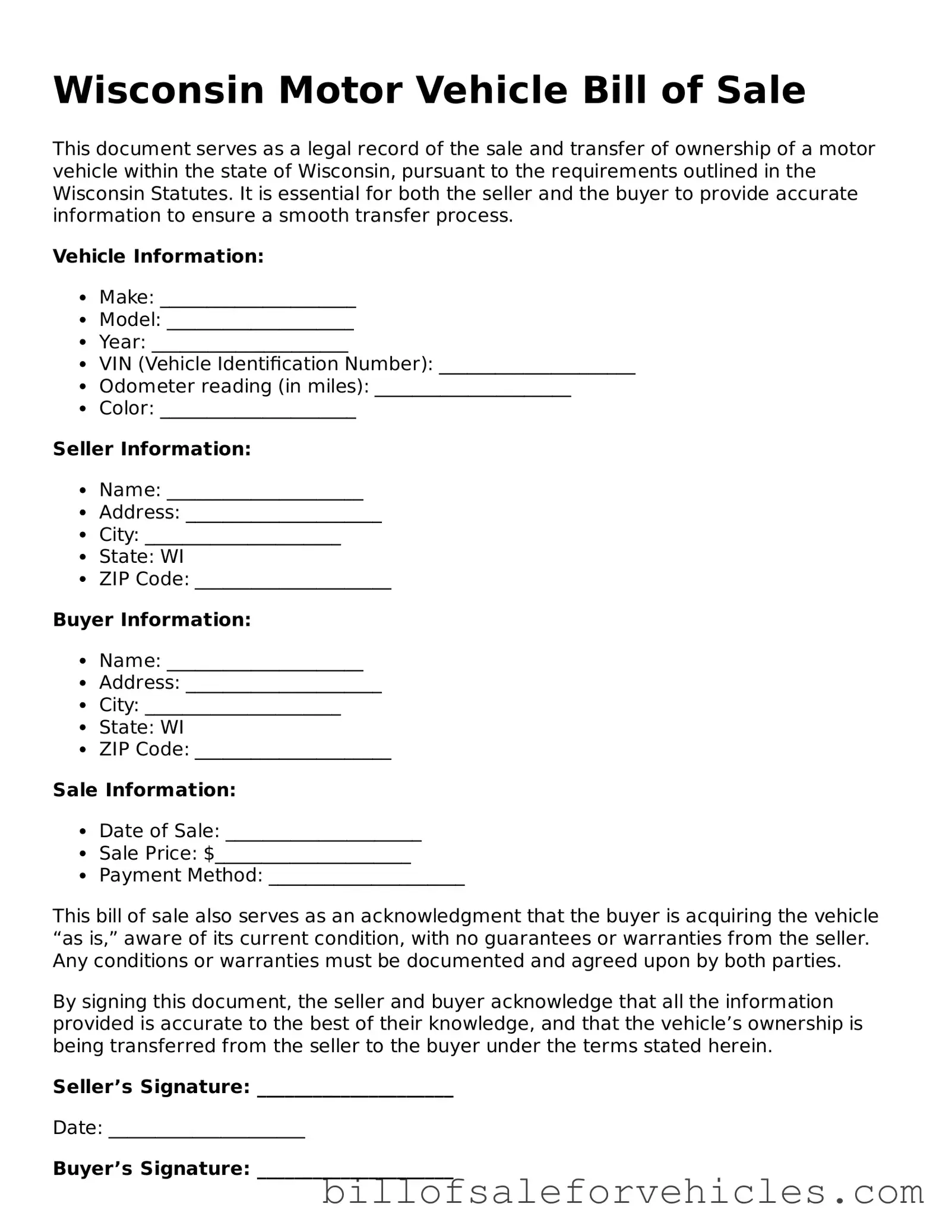What is a Wisconsin Motor Vehicle Bill of Sale form?
A Wisconsin Motor Vehicle Bill of Sale form is a legal document that records the sale and transfer of ownership of a motor vehicle in the state of Wisconsin. It serves as proof of purchase and includes key information such as the seller's and buyer's details, vehicle description, sale date, and purchase price.
Is the Wisconsin Motor Vehicle Bill of Sale form mandatory for vehicle sales?
In Wisconsin, using a Motor Vehicle Bill of Sale form is not mandatory for private vehicle sales, but it is highly recommended. The form provides a written record of the transaction that is useful for both the buyer and the seller, especially for tax reporting, legal protection, and personal record-keeping.
What information is required on a Wisconsin Motor Vehicle Bill of Sale form?
The form must include the full names and addresses of both the seller and the buyer, a detailed description of the vehicle (including make, model, year, and VIN), the sale date, and the sale price. It may also require odometer reading, signatures of both parties, and notarization, depending on the specific circumstances.
Do both the buyer and the seller need to sign the Wisconsin Motor Vehicle Bill of Sale?
Yes, for the form to be considered valid, both the seller and the buyer need to sign the Wisconsin Motor Vehicle Bill of Sale. This act confirms that both parties agree to the terms of the sale and acknowledge the transfer of ownership.
Does the Wisconsin Motor Vehicle Bill of Sale need to be notarized?
While notarization of the Wisconsin Motor Vehicle Bill of Sale is not a requirement by state law, having it notarized adds an extra layer of legal protection and authenticity to the document. It verifies the identity of the signatories and can be particularly useful if any disputes arise after the sale.
Can I create my own Wisconsin Motor Vehicle Bill of Sale form?
Yes, you can create your own Wisconsin Motor Vehicle Bill of Sale form as long as it contains all the required information. However, it is advisable to use a template or seek legal guidance to ensure that the document meets all legal requirements and adequately protects the interests of both parties.
Where can I find a template for a Wisconsin Motor Vehicle Bill of Sale?
Templates for a Wisconsin Motor Vehicle Bill of Sale can be found online through legal websites, the Wisconsin Department of Transportation, or by consulting with a legal professional. Ensure that any template used complies with Wisconsin state laws.
What happens after the Wisconsin Motor Vehicle Bill of Sale is signed?
After the form is signed, the buyer should use it to register the vehicle at a Wisconsin Department of Motor Vehicles (DMV) office. The seller should keep a copy for their records. The document serves as proof of ownership transfer, which is necessary for the buyer to obtain title and registration.
How does the Wisconsin Motor Vehicle Bill of Sale protect the buyer and the seller?
The Wisconsin Motor Vehicle Bill of Sale protects the buyer by providing proof of ownership and legal recourse in case of disputes or if the vehicle's condition was misrepresented. For the seller, it documents the sale and transfer of property, helping to release them from future liability concerning the vehicle's use or condition.
